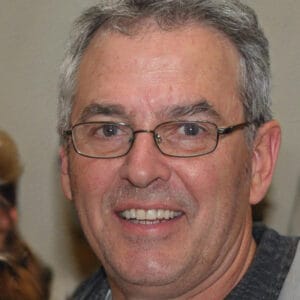Ireland’s unique geography and climate result in a diverse rainfall distribution that significantly influences various aspects of life and industry. From agriculture to water management, the amount and timing of rainfall play a crucial role.
Understanding Ireland’s rainfall distribution is essential for effective planning, adaptation, and sustainable development. As we continue to explore this topic, we will delve into the specific regional variations, seasonal patterns, and the implications of climate change on Ireland’s water resources.
Key Takeaways
- Ireland’s rainfall patterns exhibit significant regional variations. In the eastern part of the country, annual rainfall averages between 750 to 1000 mm, considered moderate. However, as one moves westward, precipitation substantially increases, with the western regions experiencing an annual rainfall of 1000-1250 mm. Mountainous areas in the west can receive over 2000 mm of rainfall annually.
- The variance in rainfall has a substantial impact on agriculture. Wetter regions in the west are conducive to grazing livestock, while drier eastern areas require smart water management techniques for crop cultivation. Farmers must adapt their practices to the local rainfall patterns.
- Ireland experiences distinct seasonal shifts in rainfall. Winter and autumn are typically the rainiest seasons, while spring sees less rainfall. These seasonal variations influence farming schedules and crop growth.
- Climate change is altering Ireland’s rainfall patterns, potentially leading to more severe rainfall events and changes in how rainfall is distributed. This has implications for flood risk and water resource management.
- Rainfall plays a crucial role in shaping Ireland’s ecosystems, creating wetland habitats that attract migratory birds, amphibians, and insects. Freshwater resources depend on consistent rainfall to support aquatic species.
What Factors Affects Rainfall Pattern in Ireland?
Ireland’s iconic green landscapes are a direct result of its unique rainfall distribution. This pattern is influenced by various geographic factors, including the country’s proximity to the Atlantic Ocean, the topography of the land, and prevailing weather systems.
Historically, the eastern regions of Ireland have experienced annual rainfall between 750 and 1000 millimeters, while the west has typically received 1000 to 1250 millimeters. In mountainous areas like the Cummeragh Mountains, rainfall can exceed 2000 millimeters per year.
However, climate change is increasingly impacting Ireland’s rainfall patterns. While individual weather events cannot be definitively attributed to climate change, research suggests that rising global temperatures may lead to more frequent and intense rainfall events. This could result in localized flooding and other water-related issues. Additionally, changes in atmospheric circulation patterns could alter the distribution of rainfall across the country, potentially affecting agriculture, water management, and other sectors.
How Does Rainfall Distribution in Ireland Impact Water Conservation Efforts?
Ireland’s uneven rainfall distribution presents both challenges and opportunities for water conservation. While the country experiences abundant rainfall in some regions, particularly the west, other areas face water scarcity during dry periods. This disparity emphasizes the importance of effective water management practices.
Irish water conservation advice provides valuable guidelines for individuals and communities to collect, store, and use rainwater efficiently. By implementing these recommendations, people can contribute to sustainable water resource management and reduce their reliance on municipal water supplies.
Rainwater harvesting systems, such as rain barrels and cisterns, can be installed to collect rainwater for various uses, including gardening, household chores, and toilet flushing. Proper filtration and treatment of harvested rainwater are essential to ensure its safety for consumption or use on edible plants.
Additionally, Irish water conservation advice often encourages water-saving habits, such as taking shorter showers, fixing leaks promptly, and using water-efficient appliances. These measures can help reduce overall water consumption and alleviate pressure on water resources during dry periods.
By following Irish water conservation advice, individuals and communities can play a vital role in addressing the challenges posed by Ireland’s unique rainfall patterns and ensuring a sustainable water future for the country.
How Does Rainfall Distribution Varies Across Regions?
Ireland’s rainfall distribution varies significantly across the country, with western regions receiving substantially more precipitation than eastern areas. This variation is influenced by factors such as proximity to the sea, local weather patterns, and the topography of the land.
Regional Differences:
- Western Regions: These areas receive the most rainfall, benefiting agriculture but also posing challenges like waterlogging.
- Eastern Regions: While receiving less rainfall, these regions still experience seasonal variations that impact farming practices.
The differing rainfall levels have a profound impact on agricultural practices in Ireland. In the wetter western regions, farmers benefit from ample water for their crops and livestock, promoting agricultural productivity. However, in the drier eastern areas, farmers must implement water conservation strategies to ensure adequate water supply for their agricultural needs. This includes techniques such as rainwater harvesting, efficient irrigation systems, and careful crop selection.
Farmers in the wetter regions also face challenges related to excessive rainfall. They must choose crops that are tolerant of high moisture levels and employ strategies to prevent waterlogging and soil erosion. By understanding and adapting to these regional differences in rainfall, Irish farmers can optimize their agricultural practices and ensure sustainable productivity.
What Is Ireland’s Seasonal Rainfall Patterns?
Seasonal Variations:
- Wettest Seasons: Winter and autumn typically experience the highest rainfall, impacting farming activities like planting and harvesting.
- Driest Seasons: Spring generally receives less rainfall, while summer can be dry in southern regions.
Understanding Ireland’s seasonal rainfall patterns and their potential impacts is crucial for effective agricultural planning and climate change adaptation. This knowledge can help farmers make informed decisions and develop strategies to mitigate risks and ensure long-term sustainability.
What Is the Impact of Rainfall on Ireland’s Landscapes and Ecosystems?
Rainfall is a fundamental force shaping Ireland’s diverse landscapes and ecosystems. It plays a critical role in agriculture, wildlife habitats, and freshwater resources.
Agricultural Impact:
- Eastern Regions: With an annual rainfall of 750-1000 mm, these areas are suitable for crops like barley, wheat, and potatoes.
- Western Regions: Higher rainfall (1000-1250 mm) makes these regions ideal for grazing livestock.
Wildlife Habitats:
- Wetland Ecosystems: Rainfall contributes to the formation of bogs, marshes, and lakes, providing vital habitats for migratory birds, amphibians, and insects.
- Biodiversity: These wetland areas support a diverse range of species and contribute to Ireland’s rich biodiversity.
Freshwater Resources:
- River and Stream Health: Consistent rainfall is essential for maintaining healthy rivers and streams, which support aquatic life and provide freshwater resources.
In conclusion, Ireland’s rainfall patterns are essential for the health and vitality of its landscapes and ecosystems. Understanding and appreciating the role of rainfall in shaping the Irish environment is crucial for sustainable land management and conservation efforts.
Frequently Asked Questions
What Part of Ireland Gets the Most Rain?
Ireland’s wettest area? That would be the west side of the country. The rain there doesn’t just make everything look lush and green – it also influences a couple of significant sectors like farming and travel. You see, the amount and location of the rain can either help or hinder the growth of crops. On the touristy side of things, some folks might be drawn to the rainier areas for their natural beauty, while others might prefer drier spots. So, you could say that rainfall in Ireland, especially in the west, really shapes the lay of the land in more ways than one.
What Is the Average Range of Rainfall?
In Ireland, the amount of rainfall you’ll experience can change depending on where you are. Why is that? Well, things like geography and topography play a big part in spreading out the rainfall. For example, if you’re hanging out in the eastern half of Ireland, you can expect around 750-1000 mm of rain each year. However, if you’re in the western parts, you’d better pack an extra umbrella because they get a bit more – typically 1000-1250 mm annually.
Is Annual Rainfall Normally Distributed?
The amount of rain that falls in Ireland each year is affected by a variety of elements, including shifts in the weather. Rather than following a consistent pattern, rainfall in Ireland tends to be quite sporadic and can differ greatly from one region to another. When we look at how rainfall in Ireland stacks up against other countries, it’s clear that Ireland’s rainfall habits are quite distinctive. Some areas, in fact, receive significantly more rain than others.
What Is the Wettest County in Ireland?
So, you’re curious about which part of Ireland gets the most rain, right? Well, the answer is Mayo. This county, found on the west coast, gets more rain than anywhere else in the country. Why is that, you ask? Its coastal location plays a big part – it just seems to catch more of that Irish rain. And it’s not just a little bit wetter, the average annual rainfall here is actually higher than the national average. So, if you’re planning a visit, don’t forget your raincoat!






